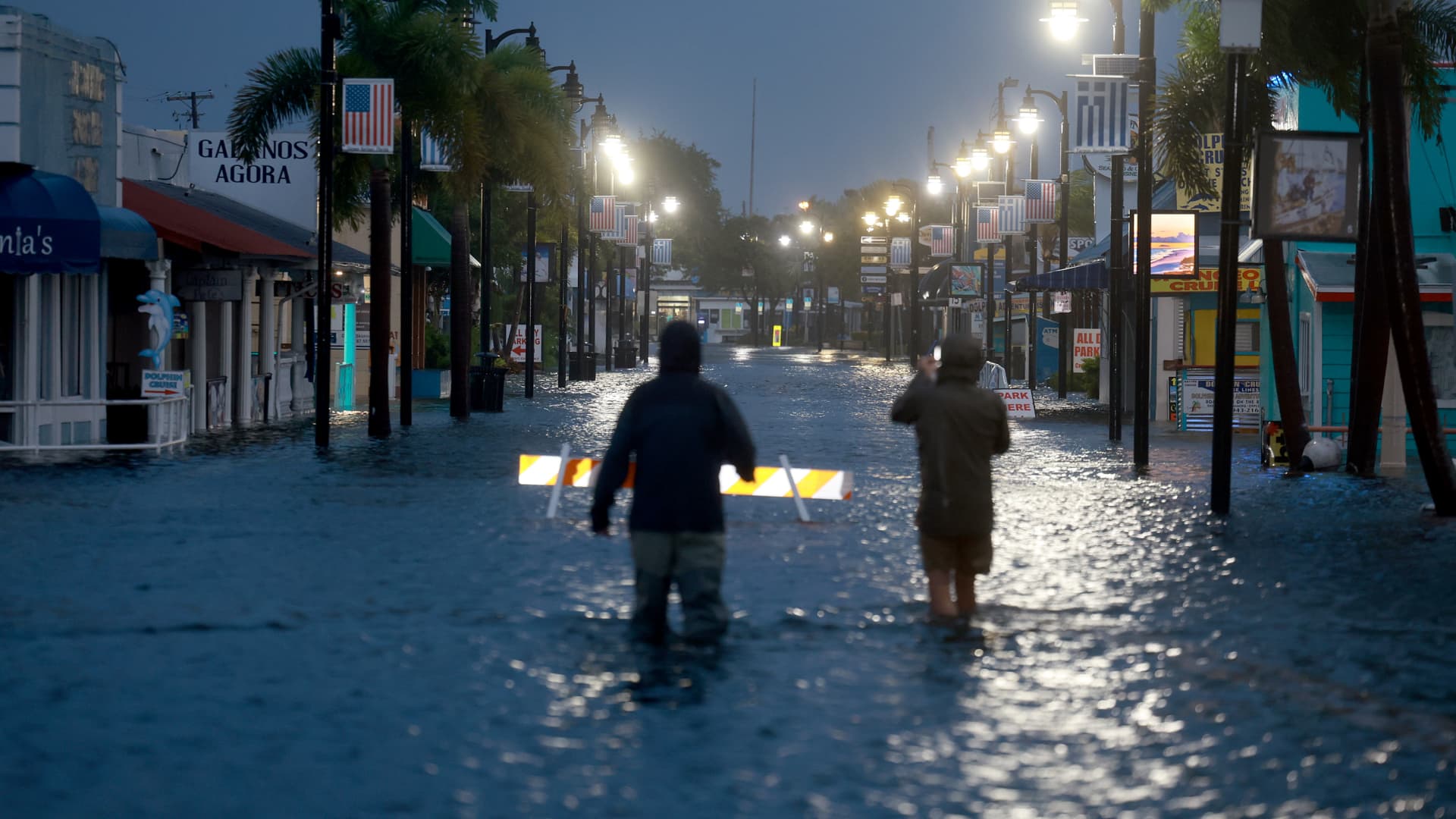Hurricane Idalia is moving inland after slamming into Florida’s Big Bend coast Wednesday morning as an “extremely dangerous” storm with maximum sustained winds of more than 100 miles per hour.
The National Hurricane Center warned that catastrophic storm surges were occurring along the coast. Some areas could suffer life-threatening flooding of up to 16 feet, according to the center.
At least 30 of Florida’s 67 counties have issued some type of evacuation order. People who remain in their homes should shelter in place, according to the state’s emergency management agency.
“Don’t mess with this storm, don’t do anything that’s going to put yourself in jeopardy,” Gov. Ron DeSantis said at a morning press conference.
More than 50,000 people were without power in Florida on Wednesday morning.
Idalia made landfall near Keaton Beach, less than 90 miles from the state capital, Tallahassee, around 8 a.m. ET as a Category 3 storm with maximum sustained winds of 125 miles per hour. The storm has since weakened slightly to a Category 2 with maximum winds of 110 miles per hour.
DeSantis said rescue efforts will begin once the winds have died down. The state has staged eight urban search and rescue teams and more than 5,000 members of the National Guard, DeSantis said. The Coast Guard is also on standby to help, he said.
Tallahassee Mayor John Dailey told NBC News that Idalia is expected to be the biggest storm to hit Florida’s state capital in history: “Stay home and stay safe,” Dailey said.
President Joe Biden approved an emergency declaration Monday for Idalia in anticipation of the hurricane making landfall. The declaration will allow the Department of Homeland Security and the Federal Emergency Management Agency to coordinate disaster relief efforts.
